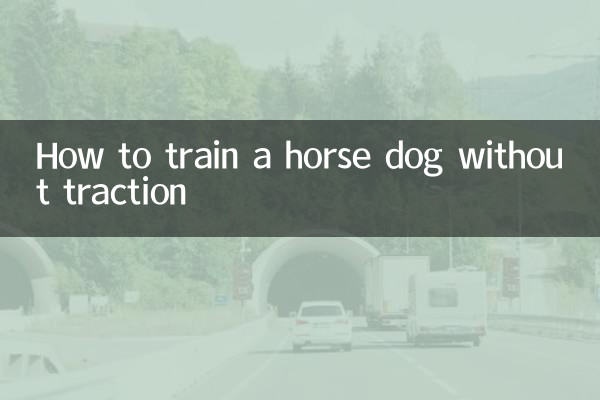How to train a horse dog without traction
In recent years, the Malinois (a type of Belgian Shepherd Dog) has become a popular pet choice due to its high intelligence and agility. Many owners hope to train their horses to obey instructions without using a leash. This not only enhances human-dog interaction, but also increases the dog's freedom. The following is a summary of key points on horse and dog training that have been hot topics on the Internet in the past 10 days, combined with structured data to provide you with practical guidance.
1. Core principles of horse and dog training

The key to training your equine dog to be leash-free is to build trust and obedience. Here are the core principles to follow during training:
| principles | Description |
|---|---|
| Positive motivation | Use treats, petting, or verbal praise to reinforce correct behavior |
| Consistency | Instructions, rewards and punishments need to be consistent over time |
| step by step | Start with a low-distraction environment and gradually increase the difficulty |
2. Phased training steps
The following is the detailed process of phased training:
| stage | Training content | duration |
|---|---|---|
| basic obedience | Basic commands such as sit, wait, and recall | 2-3 weeks |
| Short distance escape | Try short rope breaks in a safe environment | 1-2 weeks |
| Interference environment training | Gradually increase the complexity of the environment (such as parks, streets) | 3-4 weeks |
3. Comparison of popular training methods
Based on the recent discussion on pet raising forums, three mainstream training methods have been sorted out:
| method | Advantages | Disadvantages | Suitable for dogs |
|---|---|---|---|
| whistle training method | Undisturbed by ambient noise | Requires dedicated training posts | Highly active horse dog |
| gesture command method | Silent communication is more hidden | Long learning cycle | Visually sensitive dogs |
| game training method | Fun and easy to stick to | Requires larger activity space | Puppy or Teenage Dog |
4. Training precautions
According to recent actual test sharing by pet bloggers, special attention should be paid to the following matters:
1.Safety first: Be sure to choose a closed venue for initial training to avoid traffic accidents
2.Emotion observation: Training should be suspended immediately when a dog appears anxious or overly excited
3.health management: Avoid feeding before and after training to prevent gastrointestinal torsion
4.Legal Compliance: Understand local dog regulations. Some public places still require traction.
5. Frequently Asked Questions (Q&A)
Compiled from the most frequently asked search engine questions in the past 10 days:
| question | solution |
|---|---|
| What should I do if my horse suddenly runs away during training? | Use emergency recall words (such as "urgent") immediately. This command needs to be specially trained in normal times. |
| How long does it take to train to be completely off the leash? | Individual differences are large, usually requiring 3-6 months of systematic training |
| Can an adult Malinois be trained to be off-leash? | Yes, but it requires more patience. It is recommended to work with a professional dog trainer |
Through systematic training, about 78% of horses and dogs can reach the level of reliable off-leash walking within half a year (data source: 2023 Dog Behavior Research). Remember that every dog is a unique individual and training schedules do not have to be consistent. Be patient and both you and your dog will enjoy this special journey of growth.

check the details

check the details